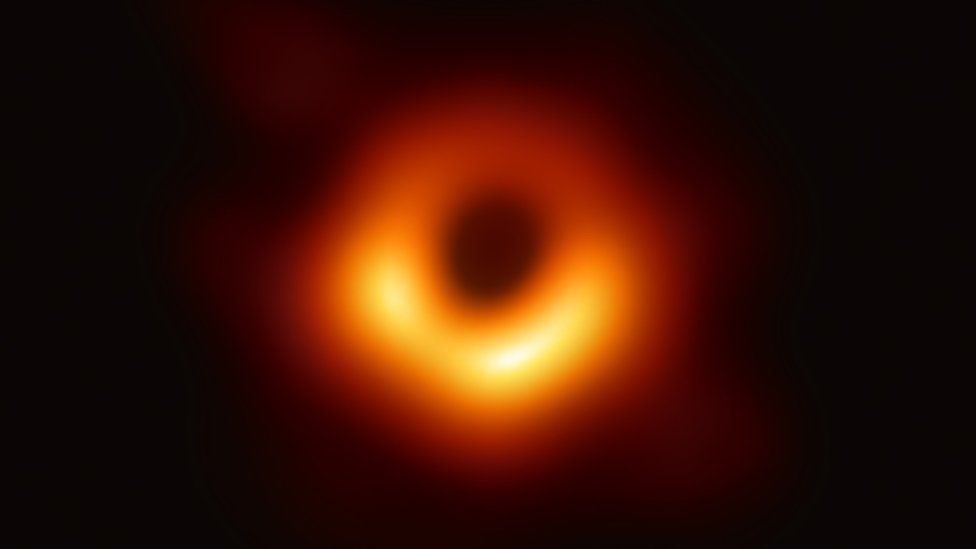Man that thing is big
40 b km is...well... Neptune's mean orbital distance is about 45 b km
Ya, it is quite gigantic.
@4:20, this video shows what the scientists saw when they looked at the black hole
at the center of our galaxy.
It is 26,000 light years away and not 55,000,000 million light years away like M87.
I love how it confirms without any doubt that black holes exist.

Light travels 300,000km/s, so it would take 40,000,000,000/300,000 =
133,333 seconds or 37 hours to go from one side of that black hole's event horizon to the other.
For our sun, light would take 1,391,000,000/300,000 =
4.6 seconds to go from from one side to the other.
To get another grasp on 40 billion kilometers, here is what Earth looks like from 6 billion kilometers away.
https://en.wikipedia.org/wiki/Pale_Blue_Dot
I was always kind of curious what ultimately happens to stuff that falls into a black hole.

It probably crunches down to a single point, right?
If the black hole forms anything other than a point singularity such as some kind of crazy ring, then the force of gravity at the very center should be 0 just like Earth.
But all the math breaks down inside black holes, so there is just no way to know.
Perhaps drop a star into the black hole, and then monitor the gravitational waves?
That might give some clues as to the interior, but I doubt it.








